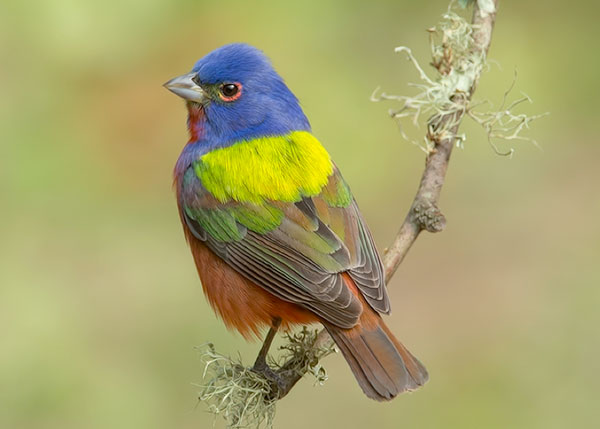
Treetops are excellent places to sing or just to perch. But what do birds do there? And which species usually go there?
In this article, you will find the birds who prefer the tops of trees!
On this page
Cuckoos, Roadrunners and Ani – Family Cuculida
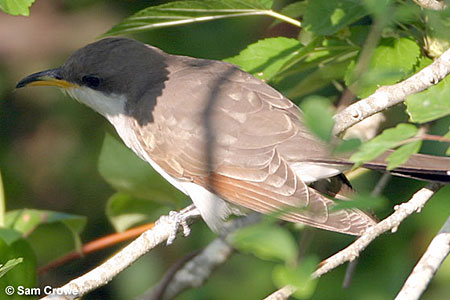
Yellow-billed Cuckoo. Found in eastern 2/3rds of the United States. Absent in winter. Compare with similar Black-billed Cuckoo.
Widely distributed across eastern North American forests but far less common in the west, the Yellow-billed Cuckoo is efficient at taking advantage of an abundant food source such as a caterpillar or cicada outbreak. The Yellow-billed Cuckoo’s nesting cycle progresses rapidly so young can be produced before the food source diminishes.
Tyrant Flycatchers – Family Tyrannidae
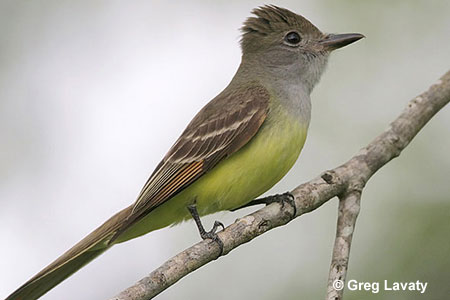
Great-Crested Flycatcher. Common summer resident in eastern half of the United States. Similar to several western flycatchers.
Widespread in forests and woodlands throughout the eastern U.S., the Great Crested Flycatcher is often heard before it is seen. Its loud “wheep” call announces its presence, and a quick look at its gray breast, yellow belly, and reddish wings and tail confirms its identity. Great Crested Flycatchers are cavity nesters, and so require mature woods with trees large enough and old enough to provide nest sites.
Waxwings – Family Bombycillidae
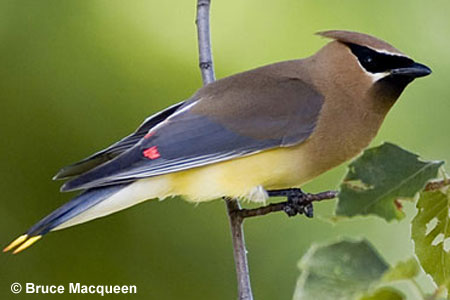
Cedar Waxwing. Widespread, winters in southern half of the United States. Compare to Bohemian Waxwing.
The Cedar Waxwing’s sweet tooth is typically met with berries. During winter months, particularly in more temperate places where freezing and thawing occurs regularly, berries may ferment, producing alcohol. Cedar Waxwings are known to occasionally become intoxicated by consuming these treats!
Cardinals, Certain Grosbeaks, Certain Buntings – Family Cardinalidae
The following two species are often found in smaller shrubs or lower to the ground than the top of trees. In spring, however, the males will perch on the tops of trees to sing loudly, declaring their territory and to attract a mate.
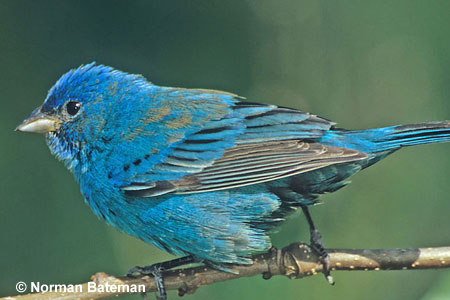
Indigo Bunting, male. Common summer resident in the eastern half of the United States.
With a broad distribution in eastern North America, the Indigo Bunting is a complete migrant, meaning that all members of the population move south in the winter. Migration takes place at night, though Indigo Buntings sometimes continue their flight after daylight arrives.
Indigo Buntings frequently return to the same breeding area in subsequent years, with males doing so more often than females. The oldest known Indigo Bunting in the wild lived over eleven years.
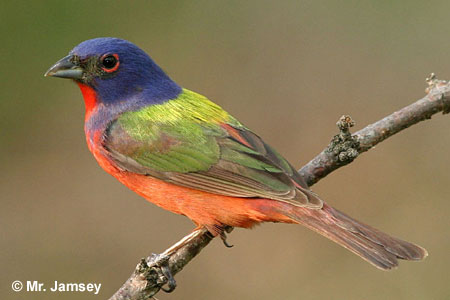
Painted Bunting, male.
With one of the most colorful and distinctive plumages of any North American bird, the Painted Bunting is popular with birders, but many aspects of its biology need more study. There are two populations of Painted Buntings with differing migration and molt patterns. One population occurs on the southeastern Atlantic Coast, and the other in the southern Great Plains east to Mississippi.

